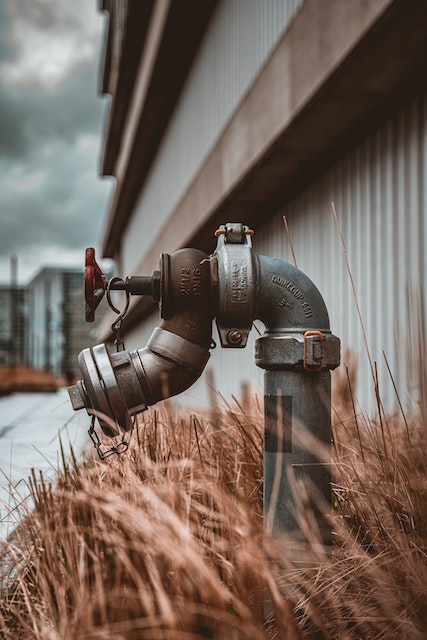Double Offset Butterfly Valve Advantages
08-21-23

Did you know that the oil and gas, chemical, and automotive industries all rely on double offset butterfly valves? They offer unique advantages over other types of valves for engineering.
If you have large volumes of liquid to process, they’re likely the right valve for the job. The following guide will explain double offset butterfly valve features and why they’re beneficial.
Read on to learn how their high flow capacity makes them an essential valve to consider.
Butterfly Valve Basics
A butterfly valve works to control the flow of materials through large pipe diameters. They do so by using a disc with a quarter-turn rotation.
There’s a rod that goes through the middle of the disc and it connects to an actuator. The actuator then helps direct the movement of the disc.
The position of the disc either sits sideways or vertically to the media’s flow. Butterfly valves are unique compared to other valves because the disc always remains in the flow. This causes a change in pressure for any position the valve moves to.
Some valves get their names because of how they’re shaped. Examples include ball valves, needle valves, and globe valves. Other valves get their names because of how they work. Examples include gate valves, pinch valves, plug valves, and slide valves.
The name “butterfly valve” falls into the category of a valve named after its function and movement. They move like the wings of a butterfly after it lands, with a 90-degree rotation.
Benefits of Double Offset Butterfly Valves
Double offset butterfly valves offer higher pressures than other butterfly valve styles. They have up to a 600 ANSI Class rating in materials such as stainless steel, carbon steel, and Hastelloy.
Some variations of double offset valves have Teflon seats. Others use a Fire Safe design equipped with metal backup seats.
They’re also easier to open and close than other kinds of valves because of their reduced operating torque. Double offset butterfly valves boast an increased flow capacity compared to other valve types as well.
They’re also much easier to clean than other types such as gate valves. This improves the efficiency of workers and gives them more time for other tasks. They also weigh less and take up less room than other valve types.
Double Offset Butterfly Valve Uses
Both gas pipelines and remote offshore oil rigs operate in extreme conditions. So, they require durable valves like double-offset valves to hold up against harsh environments and refinery media.
The valves help reduce maintenance task and add longevity to different systems. Butterfly valves are very rugged and often designed to meet specific uses.
The food industry takes advantage of those specific valve uses to ensure quality, safety, and cleanliness. For those with food allergies or dietary restrictions, butterfly valves prevent any contamination.
Some industries use double offset butterfly valves as a standard shut-off valve. That’s because they offer a much tighter seal than globe and gate valves.
In shipbuilding, they’re used for applications like ballast systems, ship side, jack-up rigs, firefighting, and piping. They’re also used for lines that go from the tanks to pumps or capacity lines.
Double offset butterfly valves also cool air, water, and gases. They can also compress air or gas applications and control/isolate flow. In some situations, the valves can stop backflow from occurring.
Zero vs Double Offset Valves
Zero offset butterfly valves also go by the names of “concentric” or “rubber-seated” valves. With this valve type, the stem and disc are in the middle of the valve’s seat, which gets centered in the valve’s body. The disc remains in steady contact with the valve’s seat.
One benefit of these zero offset valves is the media traveling through the valve won’t touch the body. That’s because the seat gets formed as a cartridge or sleeve inside of the valve’s body. However, they don’t handle as high of pressures as double offset valves.
They’re typically used in specialty and basic gas and liquid scenarios. Zero offset butterfly valves can regulate chemicals, food, coatings, food, some types of solids, and abrasive jobs.
They come in cast iron, epoxy coatings, and stainless steel varieties. Their seats get made from materials like EPDM, VITON, Buna, natural rubber, and Teflon.
Triple vs Double Offset Valves
As the name suggests, triple-offset butterfly valves use three offsets to function. Two of the offsets sit in a position similar to a double offset butterfly valve’s layout.
The third offset serves as the geometry of the seating surface to make a disc and seat shaped like a cone. The unique cone angle and the two unorthodox shaft offsets let the disc seal up against the seat without causing any friction.
The special seat design also creates uniform sealing for a tight shutoff for a metal seat configuration. It’s more affordable, and easier to automate than other metal seat options because of its lower torque.
When a metal seat is required, triple offsets are typically utilized the same way as gate valves. They produce a quarter-turn actuation for a tight shut-off.
You’ll find triple offset valves in applications like high-temperature gases and oils, high-pressure steam, and superheated steam. Keep in mind that high-temperature applications need these valves because they use a metal seat rather than a soft seat.
So, you might have noticed that double and triple-offset valves end up in very similar industries. The main difference is that more demanding applications require triple-offset valves over double-offset valves.
Understanding Double Offset Butterfly Valves
Now you know what double offset butterfly valves are and how their advantages compare to other butterfly valves. Remember this guide and consider using a double-offset valve for various applications.
You can contact us at Everlasting Valve if you have more questions or to request a quote. We believe that industrial valves should be even tougher than the applications they’re made for.